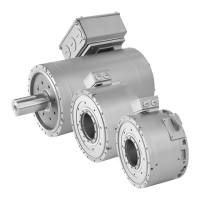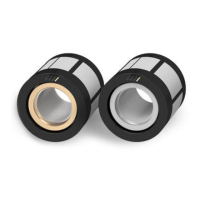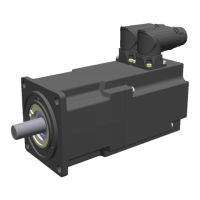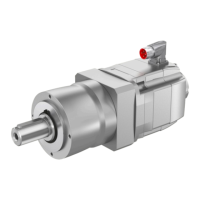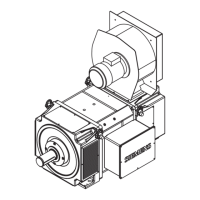Motor components and options
4.1 Motor components
1FW6 Built-in torque motors
Configuration Manual, 07/2017, 6SN1197-0AE00-0BP9
83
Requirements regarding the encoder
Your choice of encoder essentially depends on the following application and converter-
specific conditions:
● required maximum speed
● required speed accuracy
● required angular precision and resolution
● pollution level expected
● expected electrical/magnetic interference
● specified ruggedness
● electrical encoder interface
Observe the documentation of the drive system being used and the documentation of the
encoder manufacturer.
Encoder systems available in the market use different scanning principles (magnetic,
inductive, optical, …).
In conjunction with this, high-resolution optical or magnetic systems must have a pulse
clearance (or a grid spacing) of maximum 0.04 mm at the circumference on the measuring
standard.
Systems that do not have a high resolution (e.g. inductive, magnetic) must be designed to be
significantly more rugged and insensitive to pollution. With pulse clearances in the range of
approx. 1 mm on the measuring standard, these systems achieve angular measuring
accuracies that are still sufficient to address positioning accuracy specifications for a wide
range of applications.
In some instances, encoder systems also internally interpolate the measurement signal.
However, when being used on the drive system, this should be avoided as a result of the
highly accurate internal interpolation of the measurement signal in the SINAMICS sensor
modules.
Depending on the mechanical design of the machine regarding elasticity and natural
oscillation, depending on the speed and grid spacing of the measuring standard, oscillation
can be excited and noise generated.
Using a high-resolution optical measuring system, generally, when compared to other
techniques, the best dynamic performance, highest control quality, high noise immunity,
precision and low noise can be achieved. Further, excitation of oscillation can be also
avoided.
Preconditions to achieve this include:
● The overall mechanical system, including motor and encoder mounting, permits this
● Extremely stiff dynamic machine design to avoid the excitation of low-frequency
mechanical oscillation

